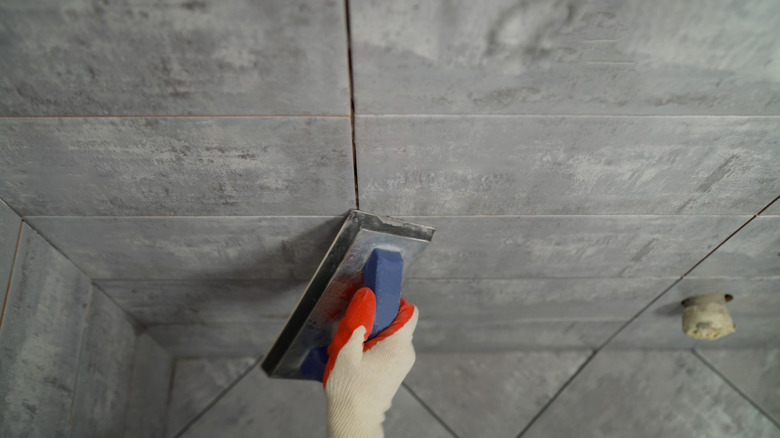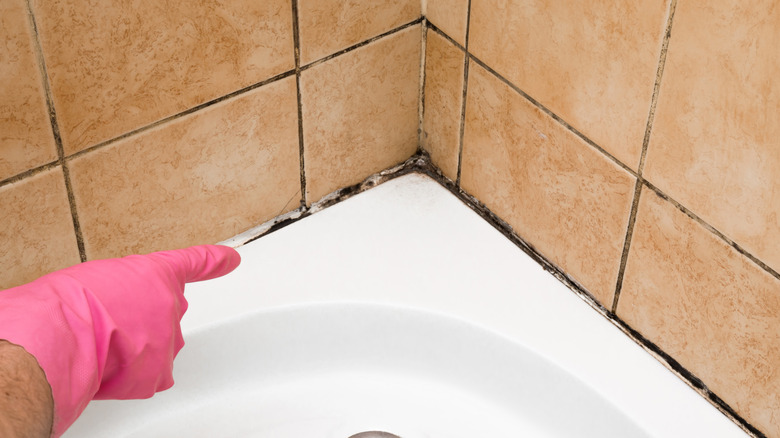The Tile Grout Color You Should Avoid Using In The Bathroom And Why
You likely spend more time in the bathroom than you think, whether it be sitting on the throne, taking a shower, shaving, applying makeup, or even just organizing all the items scattered across your bathroom countertop. It makes sense that bathrooms were the second-most renovated rooms behind kitchens in 2024, with median spending per-bathroom up to $15,000, according to a report by the University of South Alabama. One popular way to spruce up your bathroom is with a tile layout in the shower or as a backsplash, though this opens up new considerations with regards to tiles and grout colors. If you want to make a statement with something unique, one mistake you should avoid is filling the space between your masonry with pink grout, as this might mask the growth of dangerous mold.
In particular, Serratia marcescens often appears with a pink, orange, or red hue in shower corners or basins, and is typically responsible for urinary tract or wound infections. Similar considerations should be made for other grout options, as black mold is also known to grow in humid spaces. Mold colonies can begin to fester on damp surfaces within 24 to 48 hours, particularly on soap scum, shower tiles, ceramic tile, and fiberglass if exhaust fans aren't running in your bathroom as you bathe. Long-term exposure to indoor mold can affect your immune system, as well as increase the chances of developing asthma or symptoms of stress, anxiety, or depression, so you want to be careful.
Designing your bathroom tile and grout with considerations toward mold growth
With this health and safety consideration in mind, at the end of the day it's ultimately up to you what rules you want to follow when designing your bathroom. Tile-and-grout combinations can follow a few different schools of thought. The classic look is known as "subway tile," in which you have a plain white tile with darker grout filling the gaps. You can also go in the opposite direction with darker tiles than grout, or make your grout color roughly equal to the tiles' shade. However, it's worth noting that grout typically darkens over time and usage, which means darker grout shows less signs of aging. Regardless of your color choices, newly installed tiles and grout should be washed every two or three days with warm water and bar soap.
If you simply can't avoid the allure of something like pink-colored grout, this doesn't have to be a mistake waiting to happen; there are ways you can reduce the risk of developing mold. Alongside the aforementioned exhaust fans, you can also regulate the humidity levels in your home between 30% to 50%, or try to keep bathroom temperatures out of the 77-to-86-degree Fahrenheit danger zone. Outdoor drain pipes that take water away from your home's foundation can reduce the chances of mold festering beyond the bathroom. It's also worth becoming aware of ways to identify and get rid of mold for good, should it come to that.

